Interesting examples from Poland of contemporary icons. The article is primarily about the results of a competition but it does have examples of the work of several artists.
The Baroque is Tridentine Art for the Latin Mass
if we want to inspire a powerful Counter-Modern or Counter-Postmodern Catholic culture today, then we need to reconnect today's worship with art so that people are engaged with it in the course of their worship. This means modifying our worship — even in the Latin Mass - and painting art that connects with people today.
Christianity's Neglected Cultural Weapons - Signs and Symbols
The Responsibility of Patrons of the Arts
The state of "Christian art" is frequently, and not without reason, criticized as being substandard but the solution is simple. If you want art that "leads to God through the appreciation of beauty, harmony, goodness, truth and love, respect, unity and the transcendent," then patronize that type of art. If you have the means, commission that type of art.
The Artist as Priest
Priest, Prophet and King, all of the baptized are invested in these three offices. The degree to which they fulfill these offices will depend on their individual gifts, talents, and calling.
But how, specifically does an artist fulfill the role of priest? To answer this we must first briefly examine the role of the priest and the Sacraments of the Church.
The Wisdom of Fra Angelico
John of Fiesole (Fra Angelico),the patron of Christian artists,left us many paintings but few words. The quotes that are attributed to him, however, speak volumes.
The Praise of Men
The lure of adulation, praise, and recognition, is a tempting one. But ultimately it may lead us away from the path God has put us on. Humility is often seen as a weakness, something that keeps us from achieving all that we are capable of. But this is the wrong way to look at it. When we stop seeking the approval of others, we begin to focus our gifts and talents on pleasing God.
The Vocation of the Painter is Beauty
What Makes Christian Art, Christian?
A Christian, who is an artist, who is well grounded in their faith, who has formed their conscience in the teachings of the Church, will produce Christian art. It doesn't matter if it is a portrait, a landscape, a superhero movie, or pop song, that artist will produce work that is consistent with teachings and values of their faith.
A "Christian Artist" is always Christian first, and then an artist, because the gift of artistic talent is the gift that has been given them to preach to the world. That does not mean that the work has to be heavy-handed in its message. It is often better if it is not.
Pagan Themes and the Christian Artist
Should a Christian artist paint themes from pagan mythology, other religions, or even fantasy motifs?
Many artists who are deeply grounded in their Christian faith, especially those just starting out in their career, have questions about what is and is not appropriate subject matter. In a previous post I addressed nudity and the Christian artist, today I would like to address subjects that don't seem to have anything to do with Christianity at all.
The story of our salvation is really the only story, and we retell it in endless variations. Even the ancient pre-Christian mythologies echo the story of Christ and His salvific role.
Think of it this way. Imagine time as a slow moving river. All of human history takes place within this river, from the first humans upstream to the present day somewhere further downstream. Each of us live out our lives in a current of this river, overlapping with others.
As humans our perception of time is linear. We look back upstream and see a sequence of events that have led us to where we are now. But God stands outside the river. God stands on the riverbank observing the passage of the stream. To God, all of our history is happening now, at different points along the river.
Is Nudity Appropriate in Christian Art?
Nudity has long been a staple of fine art, but many people feel it is inappropriate for an artist who is also a faithful Christian to portray nudity in their work.
Is it? The answer, as is so often the case in matters of faith and morals, is - it depends.
To modern sensibilities art is decoration. Usually, we are not called upon to look past the surface of what is presented. And so we focus on the external, that which we can see.
But creation consists of what we can see and what we cannot see, the visible and the invisible. It is the role of the artist to create work that draws us past the surface, what we can see, to contemplate the transcendent truth that is presented to us, that which we cannot see.
Are You Using All of Your Gifts?
“God-given gifts are by definition supernatural gifts. Even if they seem common or mundane, we can trust in their ability to work supernatural wonders.”
Have you ever wondered what God is trying to tell you? Have you ever felt frustrated because you don’t believe God is speaking to you at all? It may be that you just don’t recognize His voice.
God speaks to us through the gifts He has given us. Each one of us is given a unique set of gifts, and there are no small gifts. “To each individual some manifestation of the Spirit is given for some benefit.” These gifts are not given to us to hoard and use for our own pleasure, they are given to us to help one another, to benefit the common good. As these are God-given gifts they are by definition supernatural gifts. Even if they seem common or mundane, we can trust in their ability to work supernatural wonders.
The Artist's Fight
The Life's Work of the Artist is to Create Beauty
Many artists, especially those basing their work on traditional forms, are familiar with the "cult of the new." There seems to be an idea, within the rarified world of fine art, that "new" is better than "good," or "beautiful." This has led to some of the more extreme examples of modern art that sell for staggering sums and leave people shaking their heads over what is perceived as "art."
But outside of this "art bubble" there are artists who respect the traditions of the past and build on them, taking those ancient forms and breathing new life into them for a new generation. These are artists who recognize that their role is to pursue beauty and show it to the world, even if the world around them no longer understands the power of the beautiful.
The Artist As Prophet
We tend to think of a prophet as one who predicts the future, but that is not at all the ancient understanding of the word. The word "prophet" means speaker, or one who speaks. In Christian use, a prophet is one who has a special connection to God and speaks on God's behalf.
By virtue of our Baptism we are invested in the threefold office of Christ, priest, prophet, and king. The degree to which we fulfill each of these offices will depend on our individual gifts and calling. We are all called to be prophets, as well as priests and kings, to the degree our gifts allow us.
Pattern, Geometry, and Abstract Christian Art
"Geometric pattern is the abstract art of Christianity."
We tend to think of abstract as something that has come about only within the last one hundred years. But liturgical artists have had their own form of abstract art for nearly two thousand years. Geometric pattern is the abstract art of Christianity.
God made all of creation, visible and invisible, to teach us about Himself. When we perceive the order and pattern that is inherent in creation, the numbers that underlie all of creation, we see the thumbprint of God.
Geometrical forms, built up from mathematical (numerical) forms, are a symbolic expression of Christian Truth. They represent the thoughts of God.
In the Christian world, numbers have both a quantitative meaning and a qualitative meaning. They tell us the amount of some thing (quantity) but they also tell us about the thing itself. (qualitative.)
A carton of a dozen eggs, for example, holds a quantity of 12 eggs. But the number 12 also has a symbolic meaning. it may represent the 12 tribes of Israel, the 12 apostles, 12 signs of the zodiac, or 12 months of the year. Which of these symbols the number represents will depend on the context in which it is used.
In the context of a work of sacred art, depending on the other elements of the work, 12 eggs could represent the New Covenant, a new Church emerging from the "sealed tomb" of the old Law, resting on the foundation of the twelve apostles.
But this qualitative and quantitative language of numbers can also be used to construct abstract, i.e. non-representational, patterns that can lead us to contemplate heavenly things. Medieval manuscript paintings often have a geometric pattern serving as the background as a symbol of the order of heaven.
The work above is a design for a church floor, completed as part of the Masters of Sacred arts program at Pontifex University. It incorporates a specific type of scrolling pattern known as a guilloche. This is a meditation on Christ in the form of a geometric pattern.
Down the middle axis of the design are three shapes. The first shape at the top contains the symbol for "alpha," the first letter of the Greek Alphabet, The bottom shape holds the symbol for "omega," the last letter. Alpha and omega, the first and the last, the beginning and the end, come together in the middle in a "Christogram" a symbol representing Christ. Jesus Christ is the alpha and the omega, the first and the last, the beginning and the end. Christ is the mediator between man and God. In the ancient world, the number "2" was a mediator between the numbers 1 and 3. The number "2" then, represented a mediation between two extremes, heaven and earth, divine and human, God and man. We might also say then that Jesus, the second person of the Holy Trinity, mediates between God the Father and God the Holy Spirit.
Flowing around these central shapes is a bough of laurel leaves in a guilloche pattern. Laurel leaves are a symbol of victory, Christ is victorious over sin and death. The laurel bough weaves around eight medallions which contain another type of Christogram, in this case a cross and the letters INRI. They serve to remind us that Christ obtained His victory through death on a cross, a death at which He was proclaimed Jesus of Nazareth, King of the Jews.
And "eight" medallions also have a hidden meaning. Eight is the number of the victorious resurrected Christ and a redeemed world. Eight is the sum of "7" the number of totality and completion, and the number "1," representing the singularity of God. The number "8" is used in baptismal fonts as a symbol of a new life brought from darkness into light.
The victorious Christ is the eight day, heralding a new birth and a new creation. He brings the world from darkness into light.
There is no reason we cannot imbue the design of our churches with such geometric patterns and symbols that hold a rich symbolic language revealing the truths of the invisible world that are hidden within the visible. All it takes is the knowledge, and the will.
this article originally appeared at www.DeaconLawrence.org
______________________________________
Pontifex University is an online university offering a Master’s Degree in Sacred Arts. For more information visit the website at www.pontifex.university
Lawrence Klimecki is a deacon in the Diocese of Sacramento. He is a public speaker, writer, and artist, reflecting on the intersection of art and faith and the spiritual “hero’s journey” that is part of every person’s life. He maintains a blog at www.DeaconLawrence.org
How Does An Artist Deal With Rejection?
Rejection and failure are facts of our existence. When an artist's work is rejected or negatively critiqued, he or she is often told "don't take it personally, they are not rejecting you, just your work." This is a reflection of post-enlightenment thinking that considers art an end unto itself. It considers art in a vacuum, unrelated to the context in which it was created or the purpose it serves because to our modern way of thinking, those considerations are irrelevant.
The Artist Lives for Christ
"He who does Christ's work, must stay with Christ always."
One of the greatest Christian artists is Giovanni Fiesole, better known to the world as Blessed Fra Angelico, the "Angelic Brother." Fra Angelico is a patron saint for artists. His style of painting beautifully bridges the iconographic and gothic traditions. Giorgio Vasari, author of "Lives of the Artists," referred to Angelico as a "rare and perfect talent."
12th Century Wall Painting in Durham Cathedral - A Tradition for Today
How about this from Durham Cathedral - St Cuthbert in the style of the School of St Albans? It is in the Galilee Chapel at the Romanesque cathedral in northern England. I suggest that this approach of simple line drawings describing form, and simple coloration is one that artists of today could adopt. If they do so, a wonderful new 21st-century gothic style can emerge for the greater glory of God and the Church! If done' properly this would be simultaneously contemporary and traditional in a way that speaks powerfully of the Faith.
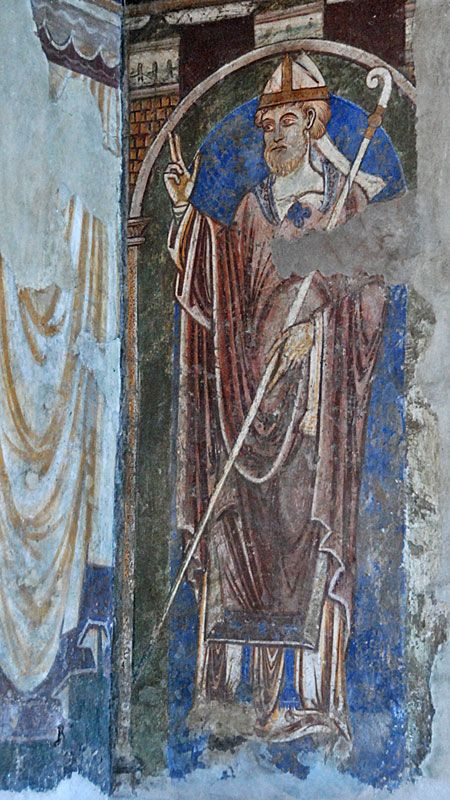
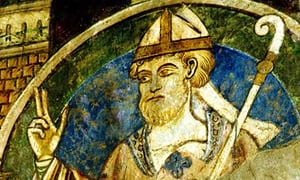
This shows that the miniature illuminations of Matthew Paris, which www.Pontifex.University promotes, can work well on a grand scale on walls too. Here is a miniature by Matthew Paris, from the 13th century.
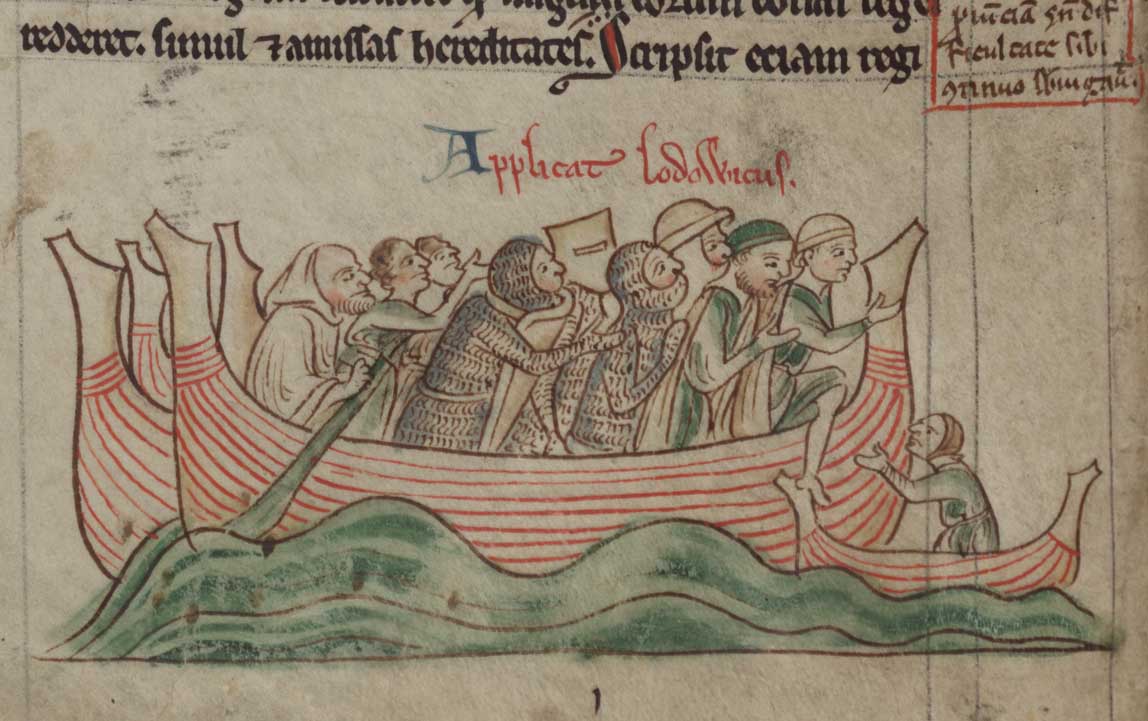
I say on this pilgrimage of life, let's set the bow of the barque headed firmly towards heaven, with tradition at the tiller!
Artists! Learn to paint in the style of the School of St Albans in the www.Pontifex University. My course, A Study of Artistic Method for Patrons and Artists not only teaches you how to paint in egg tempera, but it explains the principles by which you can make any style of art you like your own; and it so happens that the style I focus on in the class to illustrate is the School of St Albans style, as seen in the Galilee Chapel of Durham Cathedral!
Here are some more photos of Durham Cathedral to give you some context.
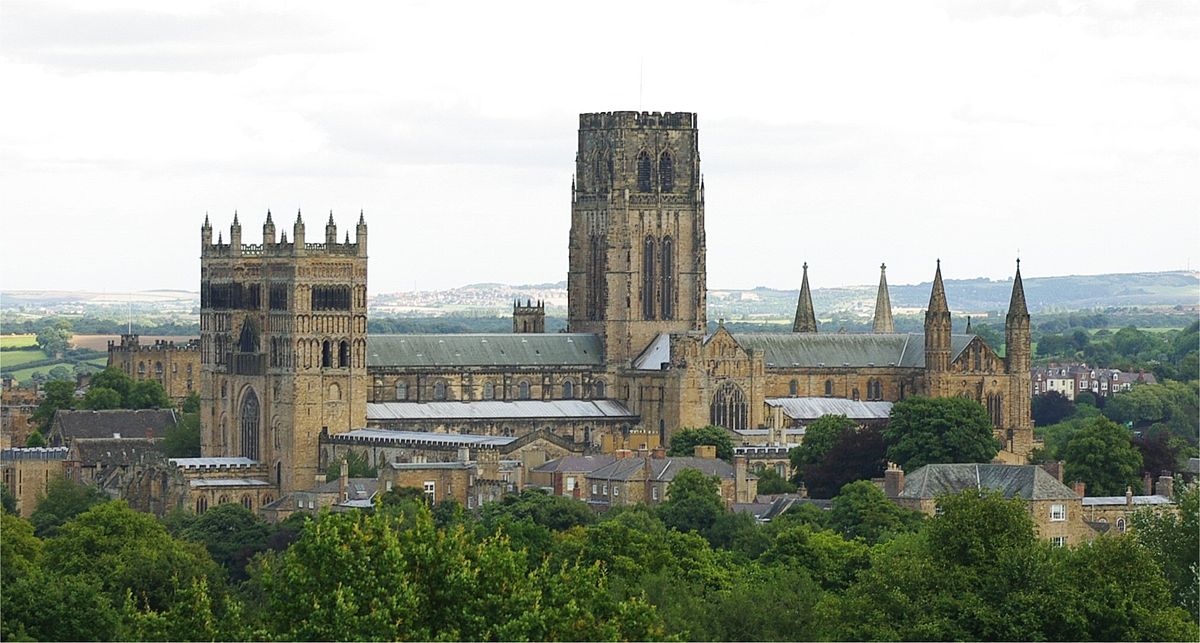
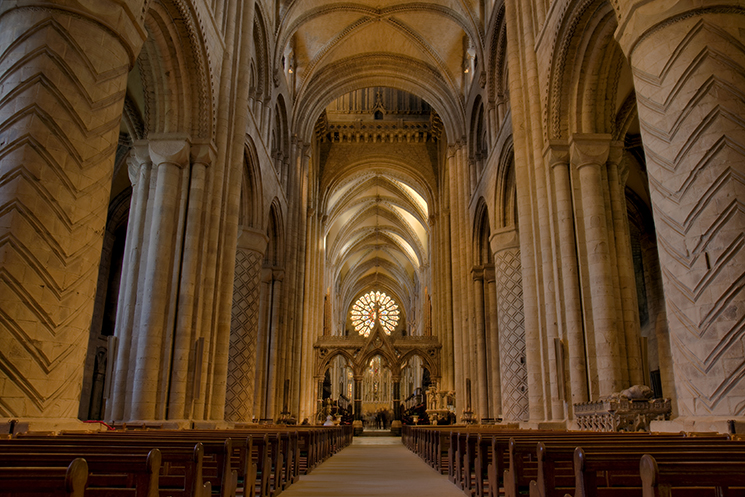
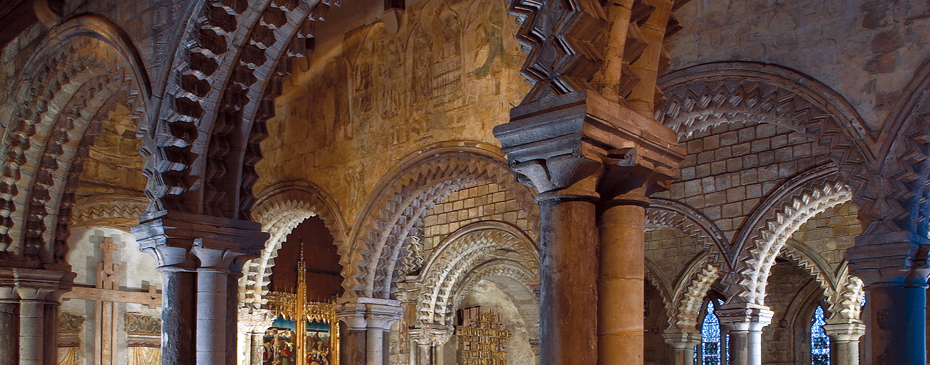
Should An Icon of a Soldier Show Him With Fatigues, Chainmail, or a Roman Kilt?
Painting the 21 Christian Coptic Martyrs
Anyone who has ever seen an icon of St Therese of Lisieux painting or John Paul II will know how difficult it is to paint an icon of a modern figure. There are two problems associated with them that I can think of:
Firstly, when the facial features are well known through photographs, there is a tendency to over naturalize the facial and the mismatch with the stylization of the rest of the figure and it ends up looking like an iconographic version of a head-in-the-hole picture
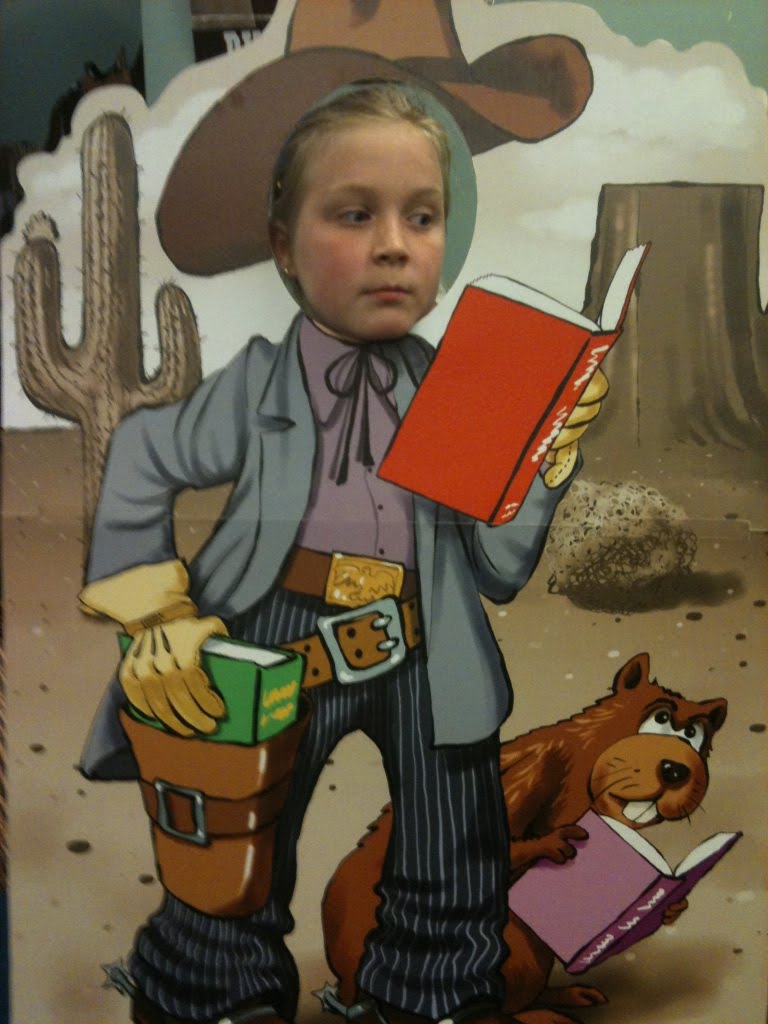
Second is dealing with contemporary clothes. While it seems to have been fine in the middle ages to paint the soldiers of their past in contemporary chainmail because the idea of awareness of what the biblical soldiers might actually have worn was different (here's Samual anointing David and David slaying Goliath).
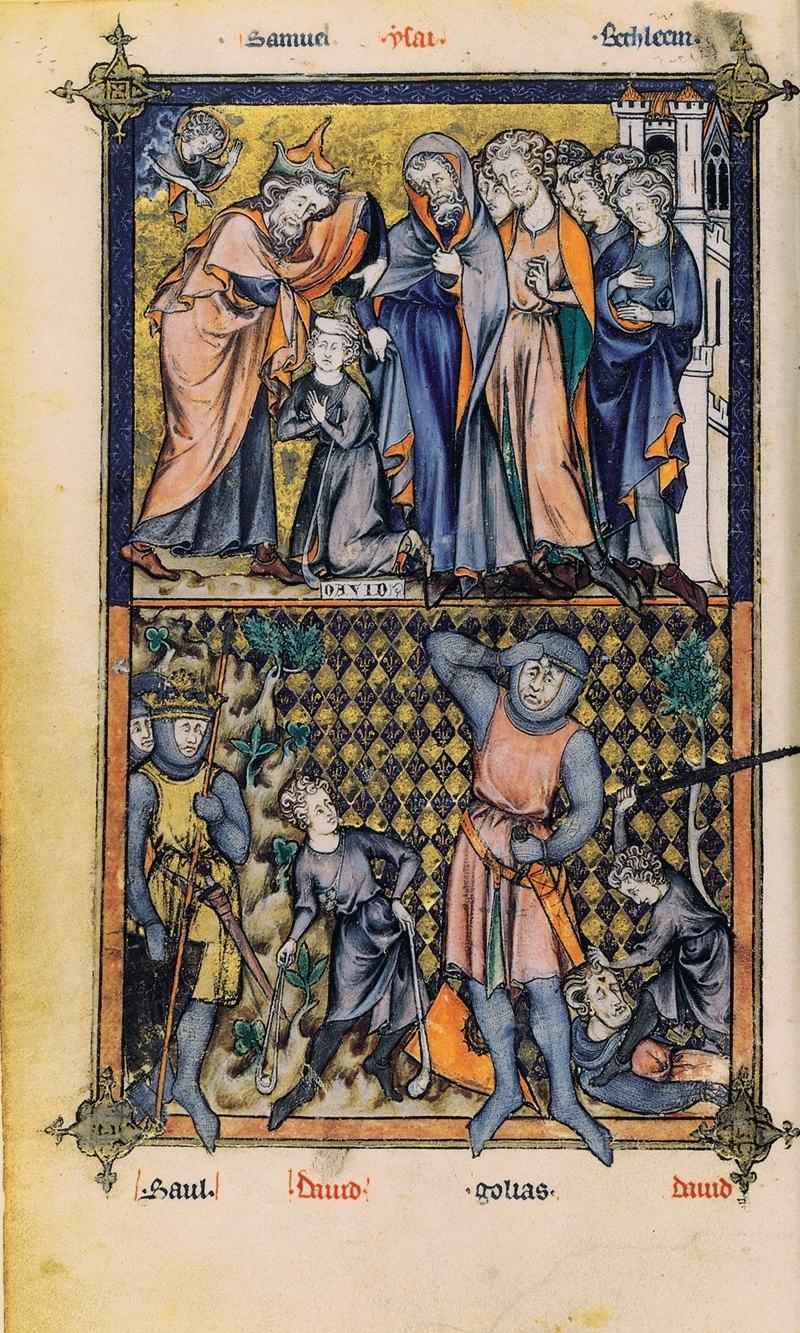
...I don't think it would work today. We would use historical dress. When it comes to contemporary saints, such as the 21 Coptic Christian martyrs beheaded by ISIS, the iconographer can't suddenly put them in historical clothing to give the aura of holiness but must aim to represent the clothes they wore in an iconographic way.
Here is an icon by a neo-Coptic iconographer of the 21 martyrs. Notice the sensitive way that the painter has handled the faces and the clothes, to create a contemporary icon very well, even portraying the bright orange jumpsuits that the prisoners wore.
Artists! Do the Master's in Sacred Arts at www.Pontifex.University























